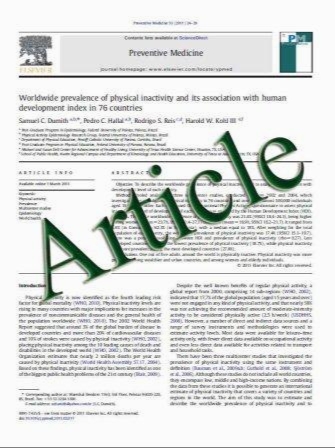Physical activity in middle-aged women and hip fracture risk: the UFO study
- نوع فایل : کتاب
- زبان : انگلیسی
- مؤلف : U. Englund & P. Nordstrِm & J. Nilsson & G. Bucht & U. Bjِrnstig & G. Hallmans & O. Svensson & U. Pettersson
- چاپ و سال / کشور: 2010
Description
Summary In a population-based case-control study, we demonstrate that middle-aged women who were active with walking or in different physical spare time activities were at lower risk of later sustaining a hip fracture compared to more sedentary women. Introduction In middle-aged women participating in the Umeه Fracture and Osteoporosis (UFO) study, we investigated whether physical activity is associated with a subsequent decreased risk of sustaining a hip fracture. Methods The UFO study is a nested case-control study investigating associations between bone markers, lifestyle, and osteoporotic fractures. We identified 81 female hip fracture cases that had reported lifestyle data before they sustained their fracture. Each case was compared with two female controls who were identified from the same cohort and matched for age and week of reporting data, yielding a total cohort of 237 subjects. Mean age at baseline was 57.2±5.0 years, and mean age at fracture was 65.4± 6.4 years. Results Conditional logistic regression analysis with adjustments for height, weight, smoking, and menopausal status showed that subjects who were regularly active with walking or had a moderate or high frequency of physical spare time activities (i.e. berry/mushroom picking and snow shovelling) were at reduced risk of sustaining a hip fracture (OR 0.14; 95% CI; 0.05–0.53 for walking and OR 0.19; 95% CI; 0.08–0.46, OR 0.17, 95% CI; 0.05–0.64 for moderate and high frequency of spare time activities, respectively) compared to more sedentary women. Conclusion An active lifestyle in middle age seems to reduce the risk of future hip fracture. Possible mechanisms may include improved muscle strength, coordination, and balance resulting in a decreased risk of falling and perhaps also direct skeletal benefits.
Osteoporos Int (2011) 22:499–505 DOI 10.1007/s00198-010-1234-1 Received: 14 October 2009 / Accepted: 12 March 2010 / Published online: 13 May 2010


